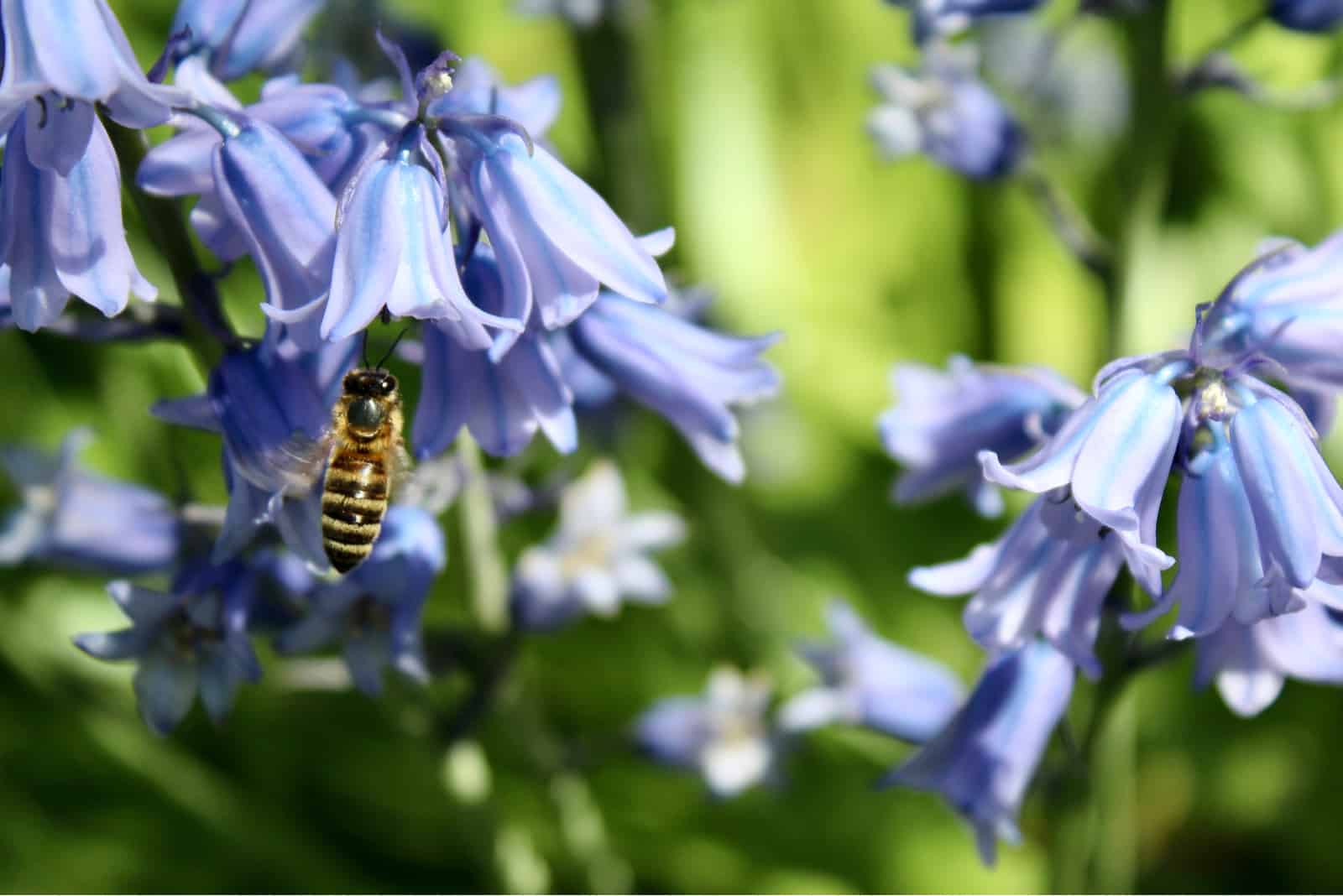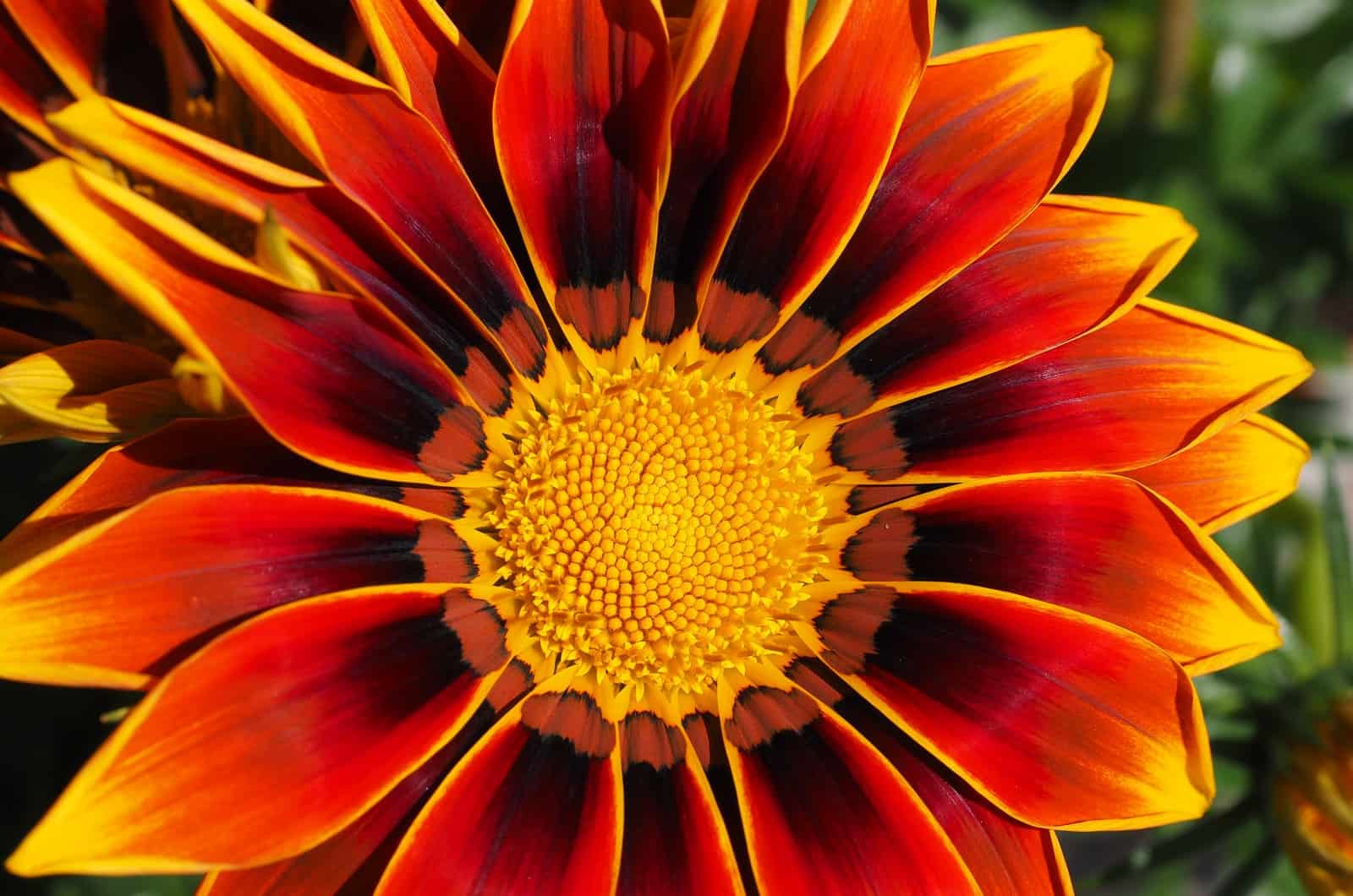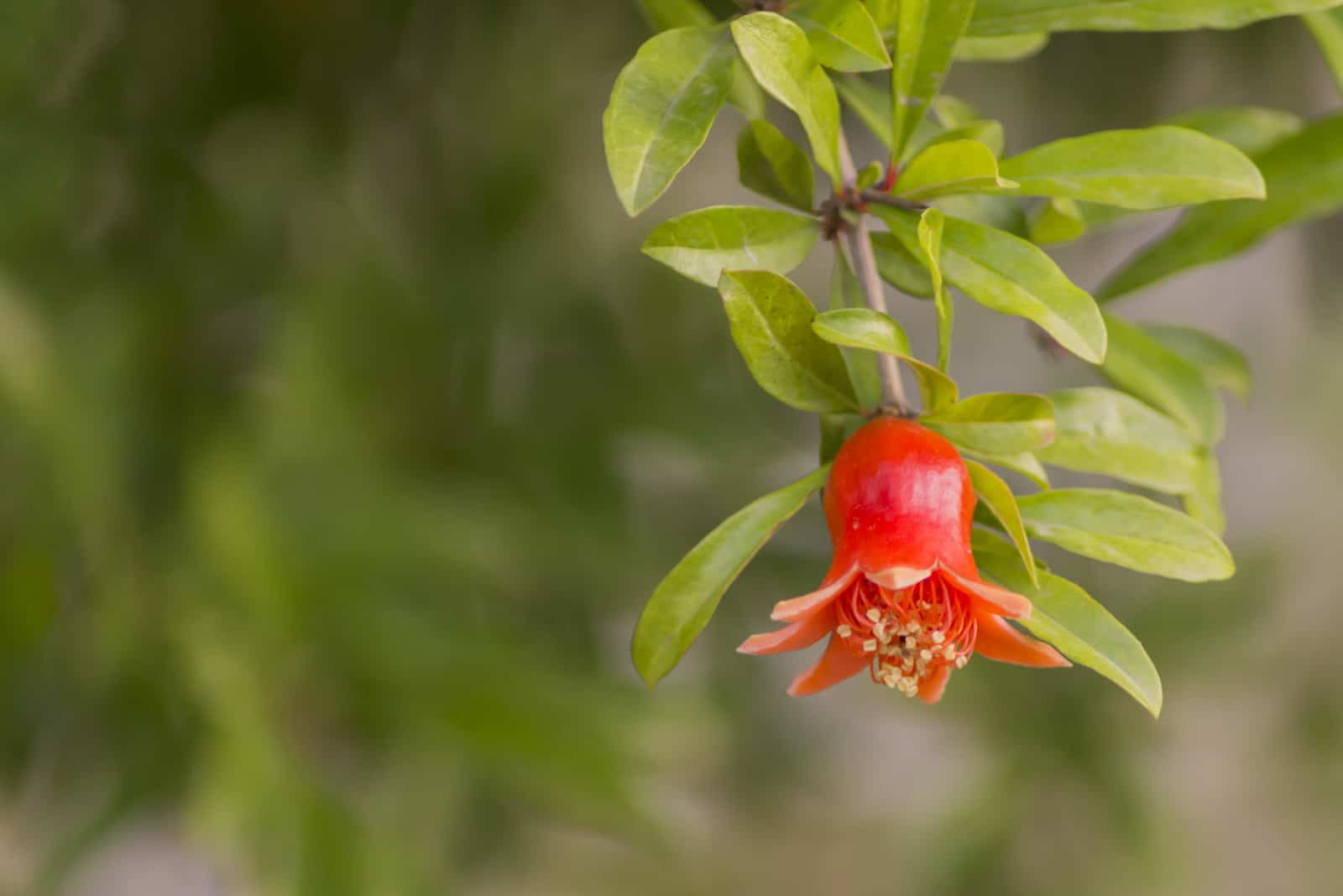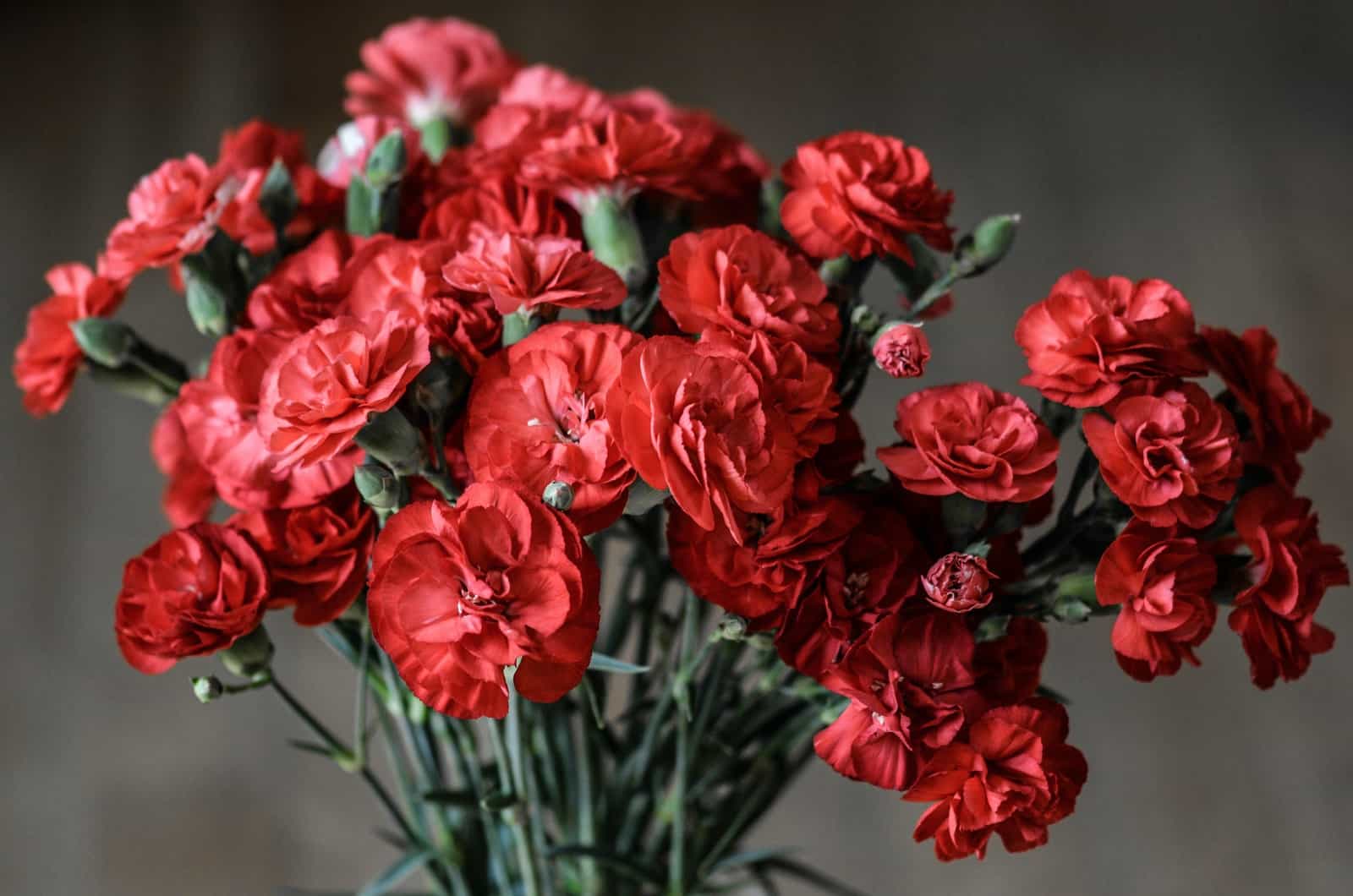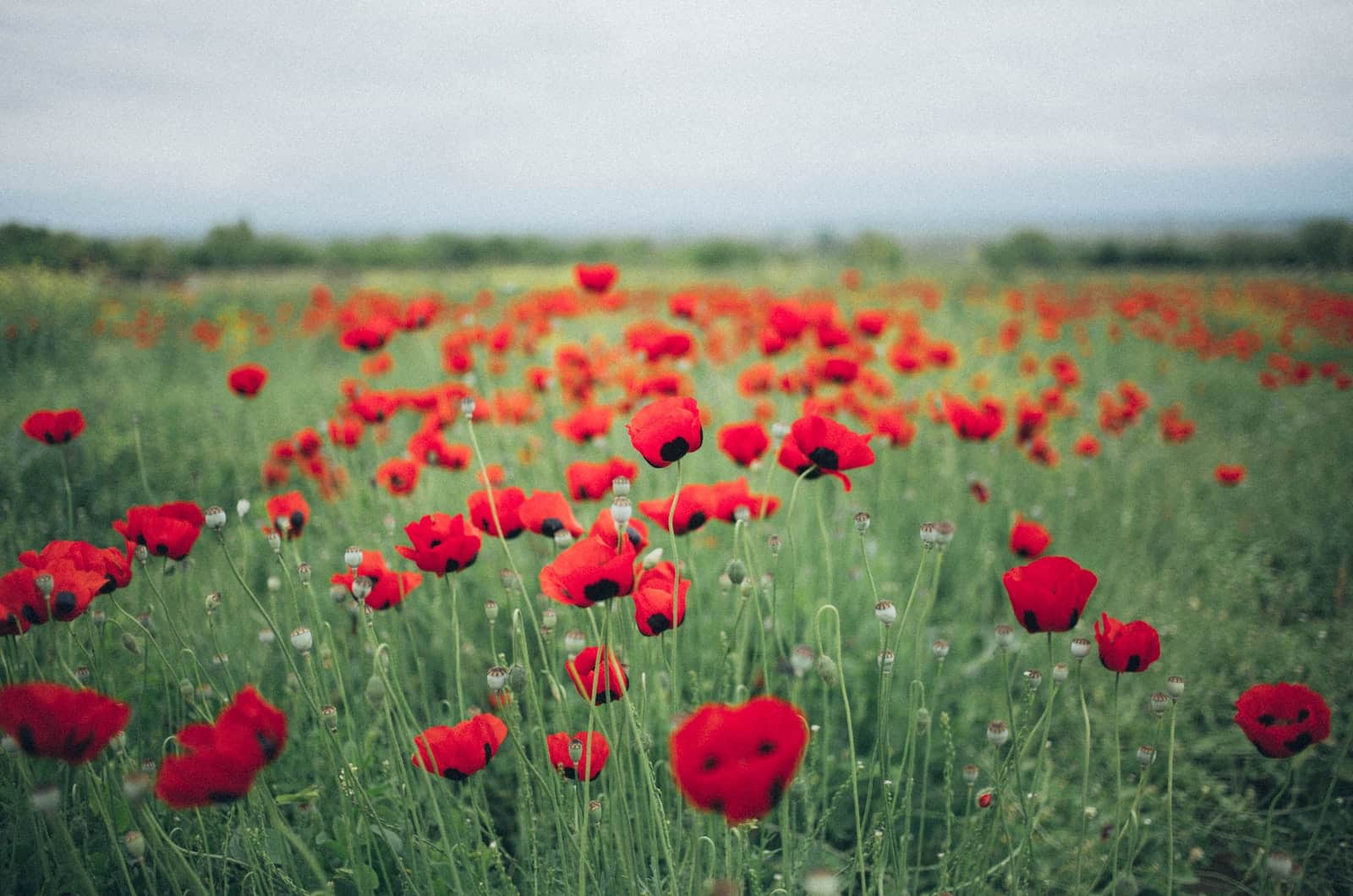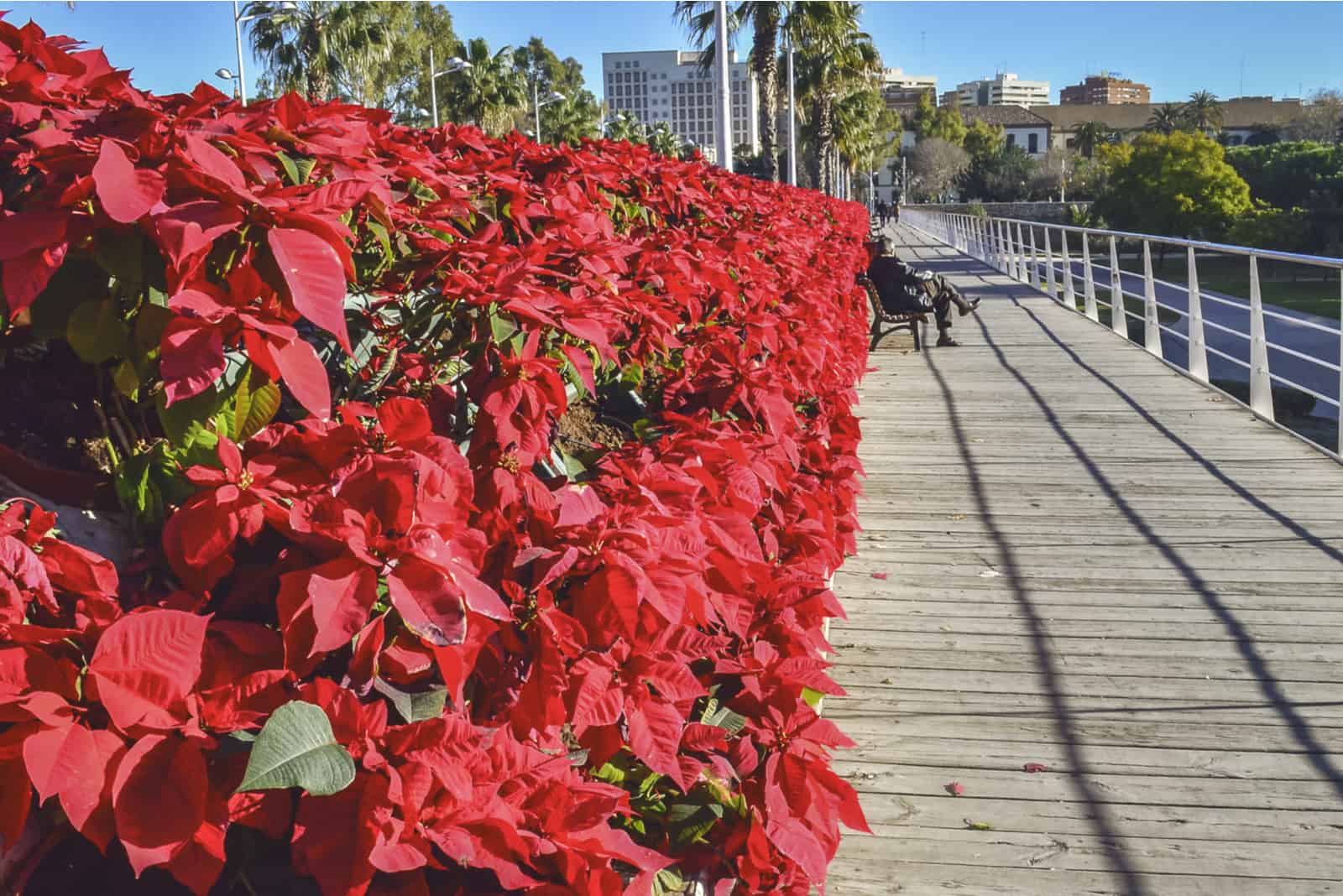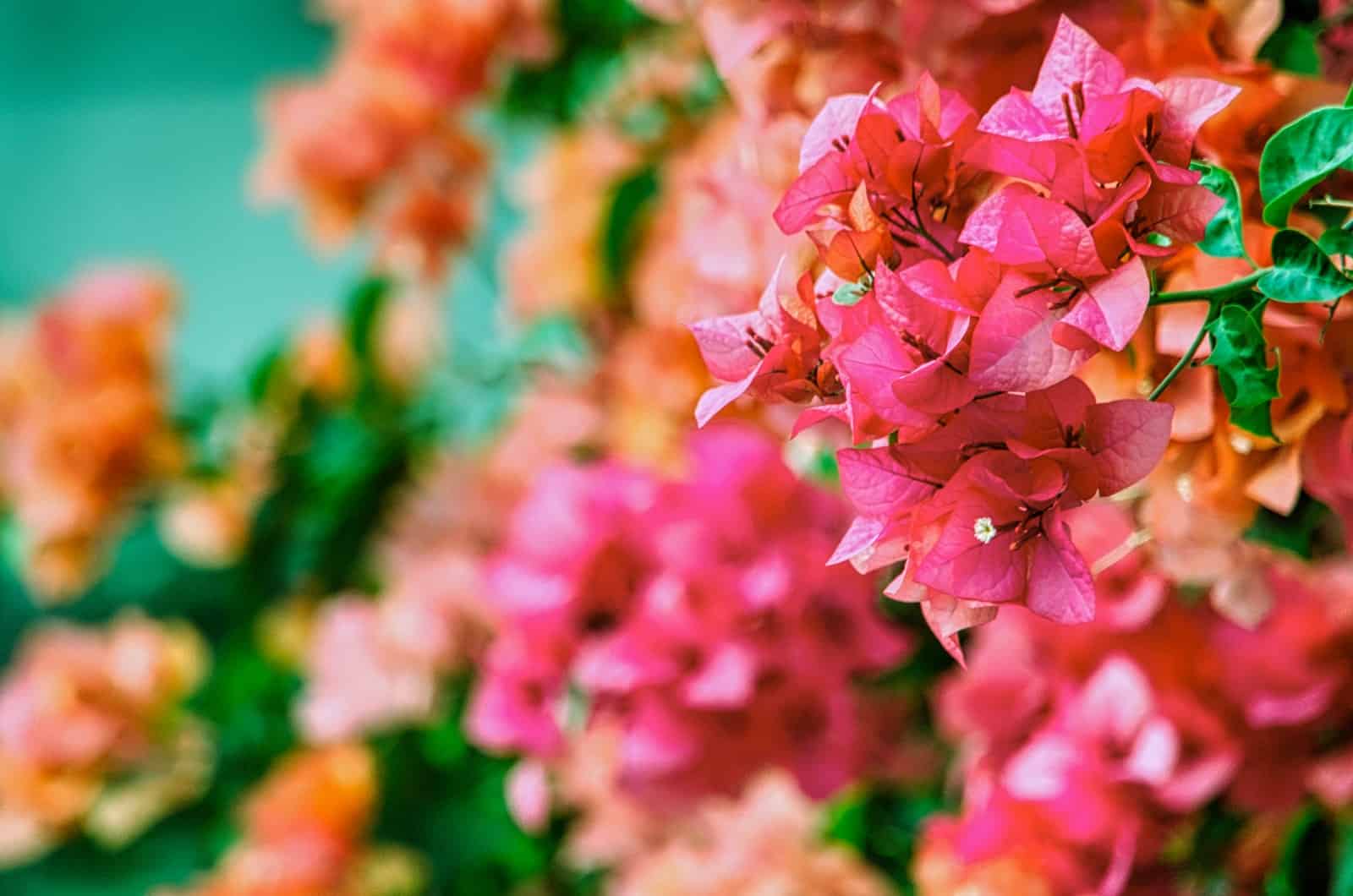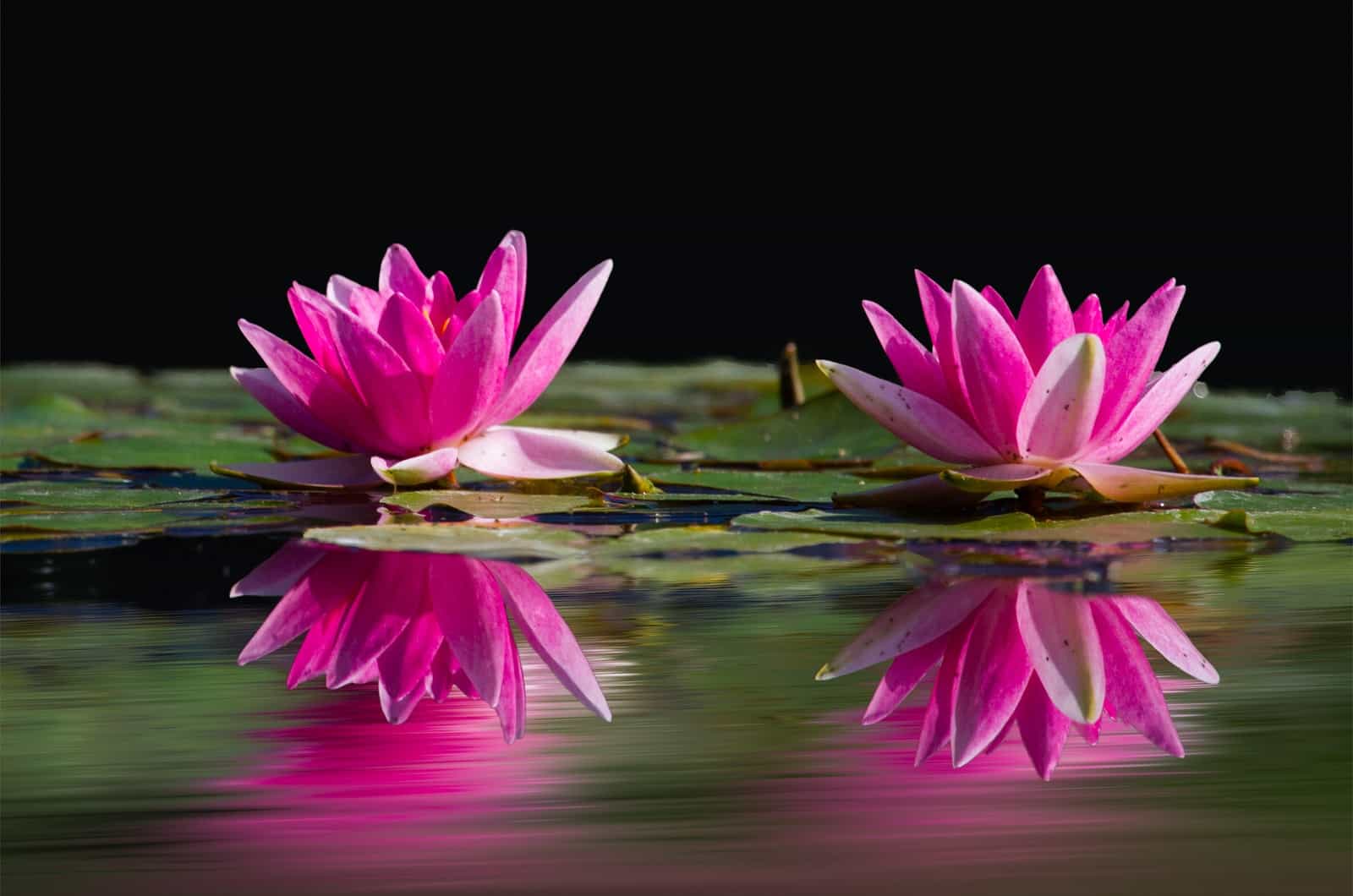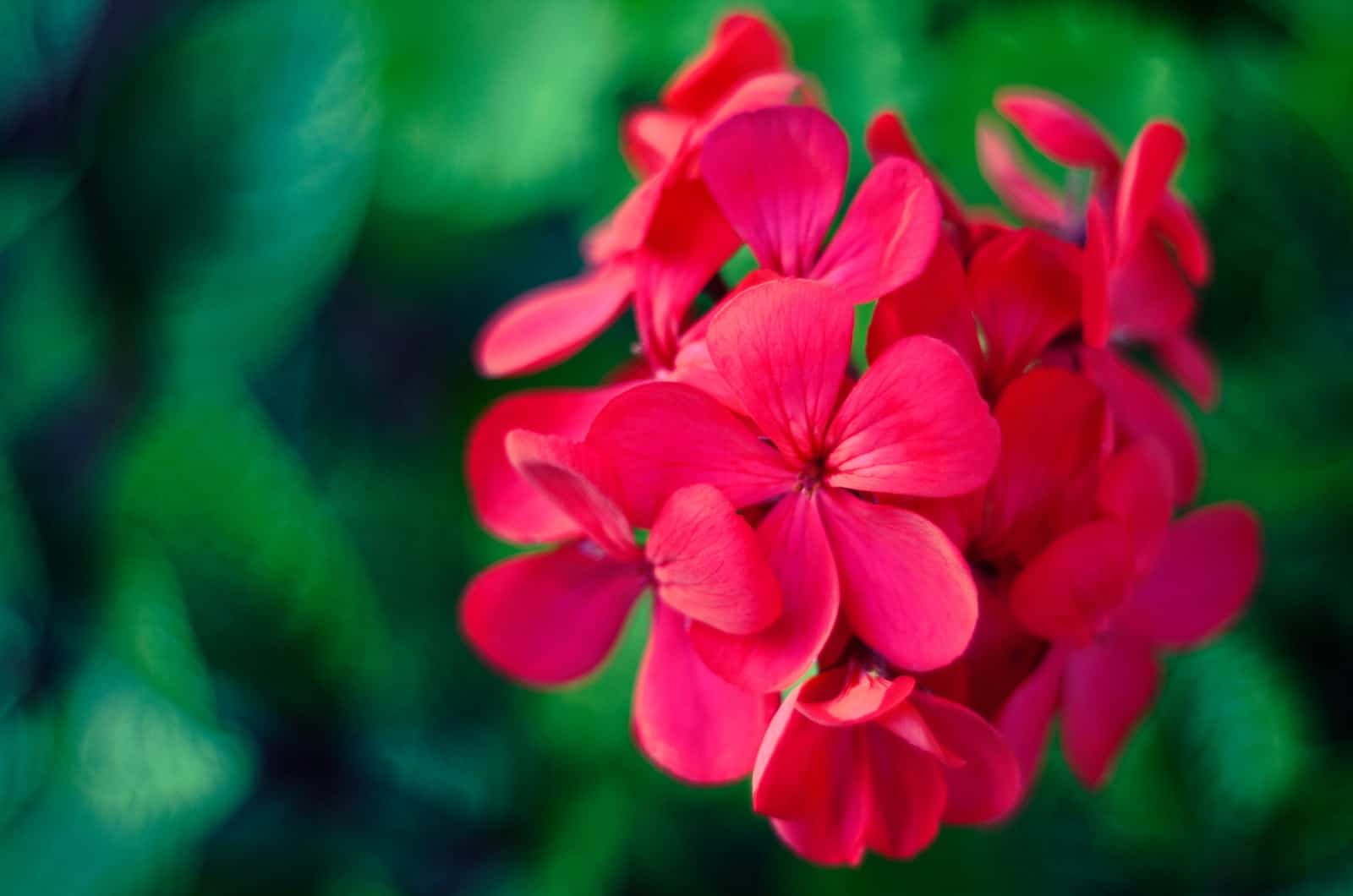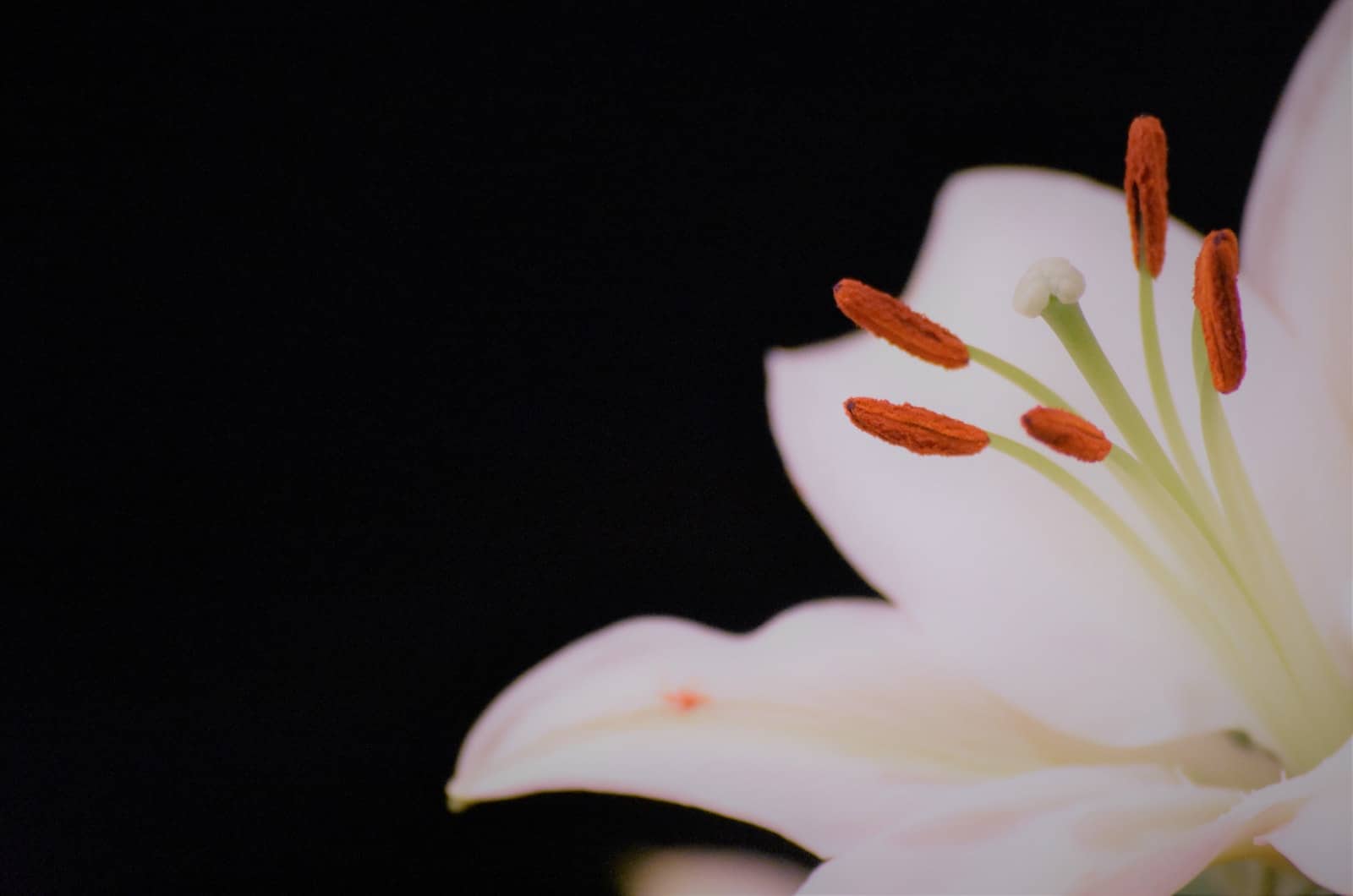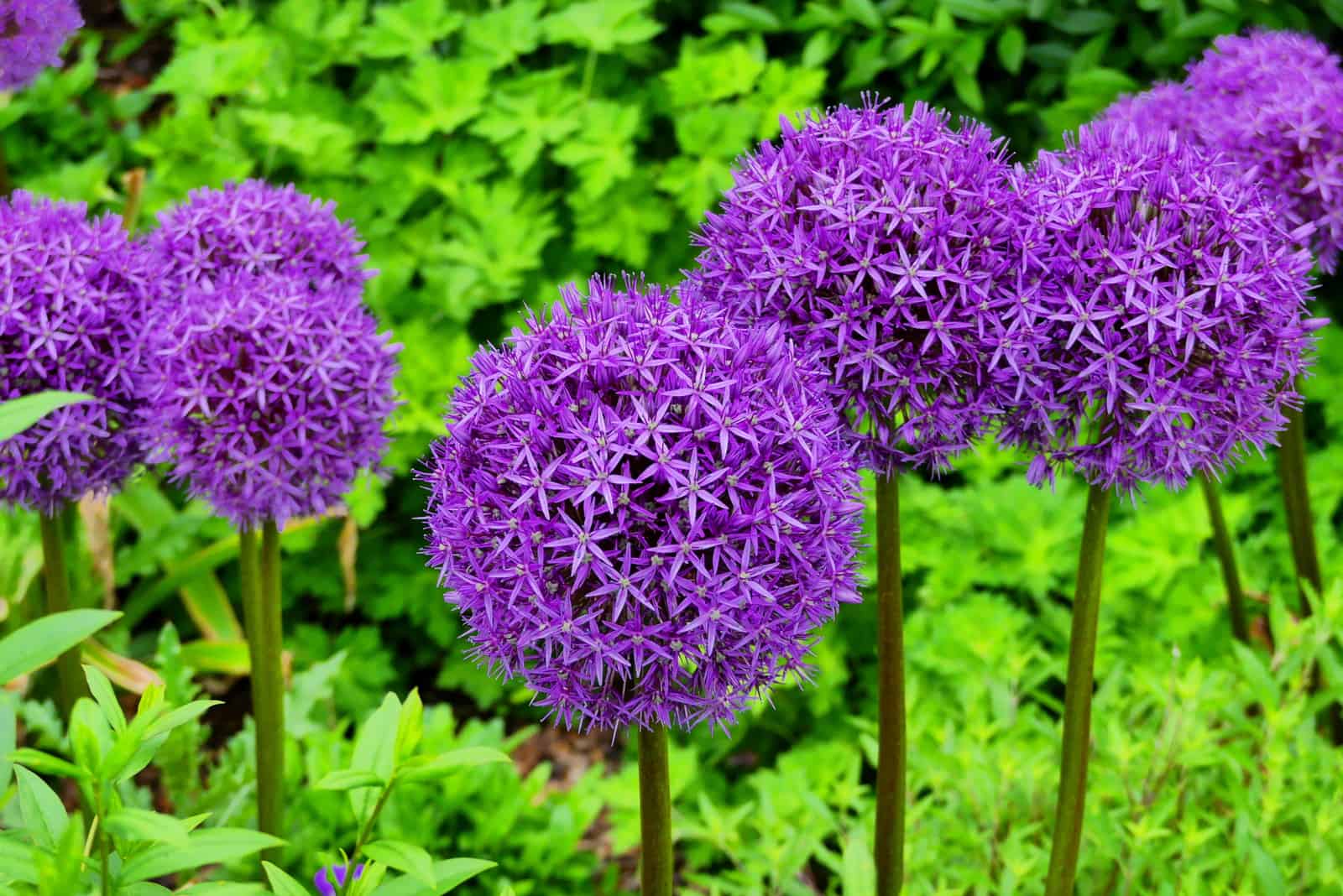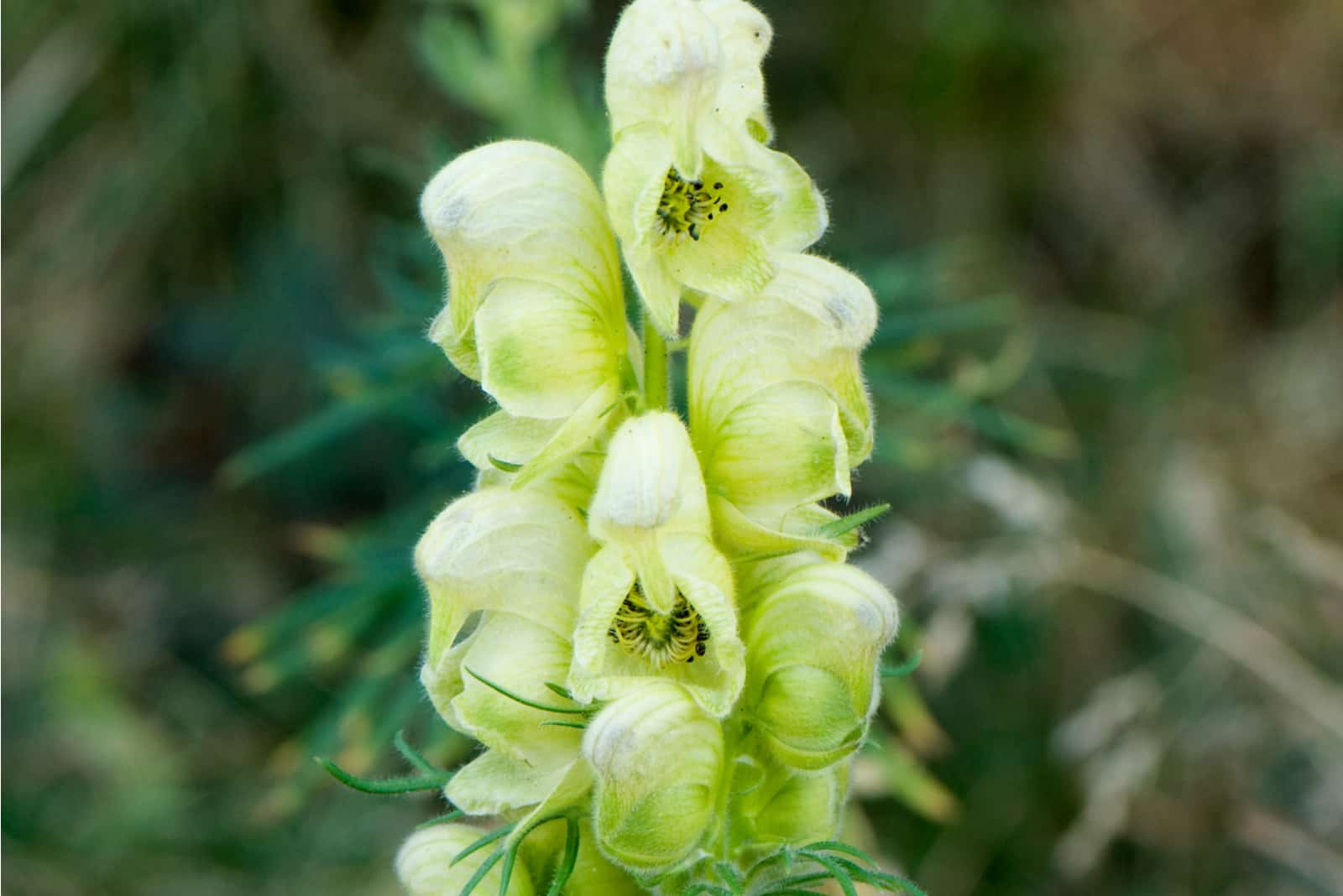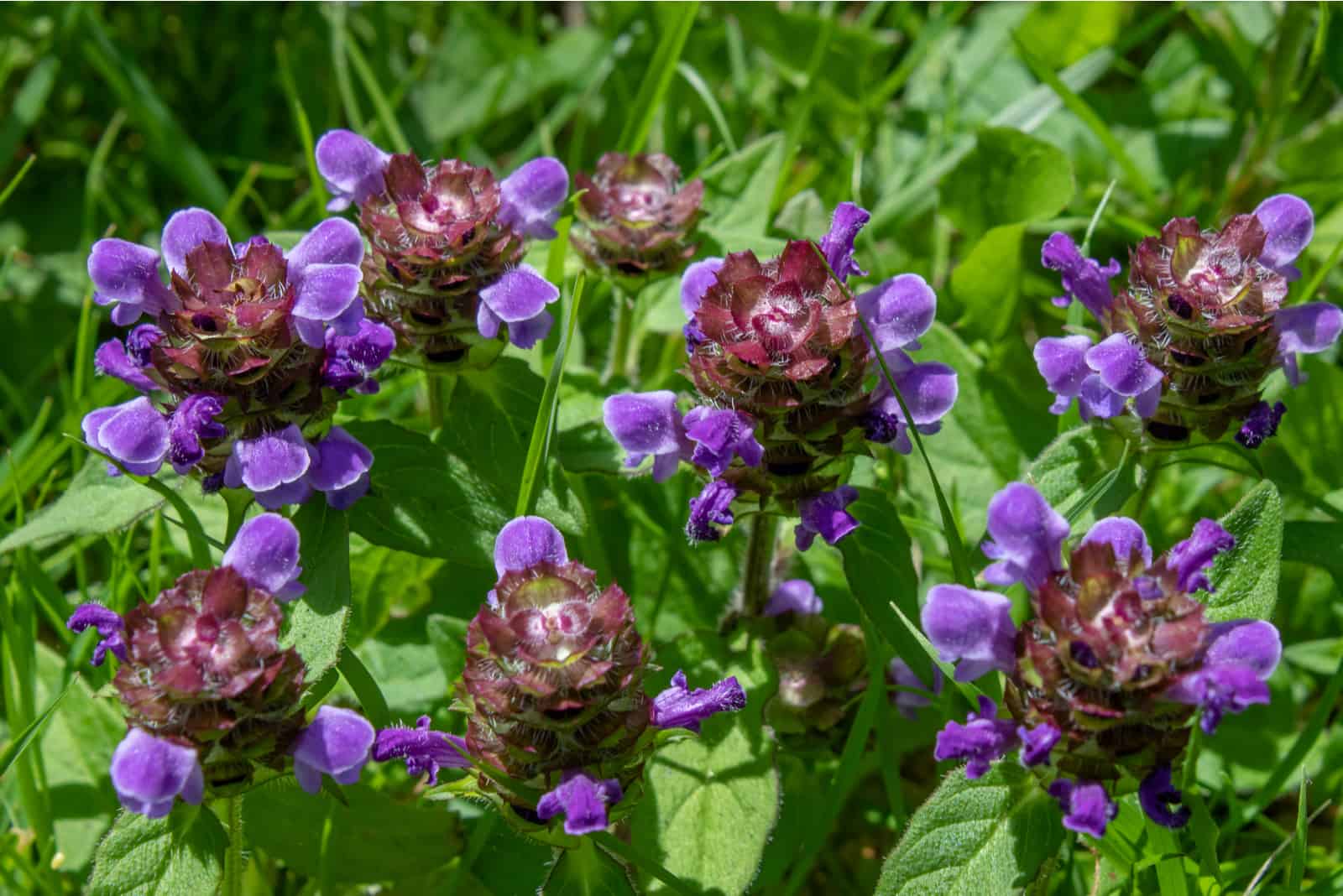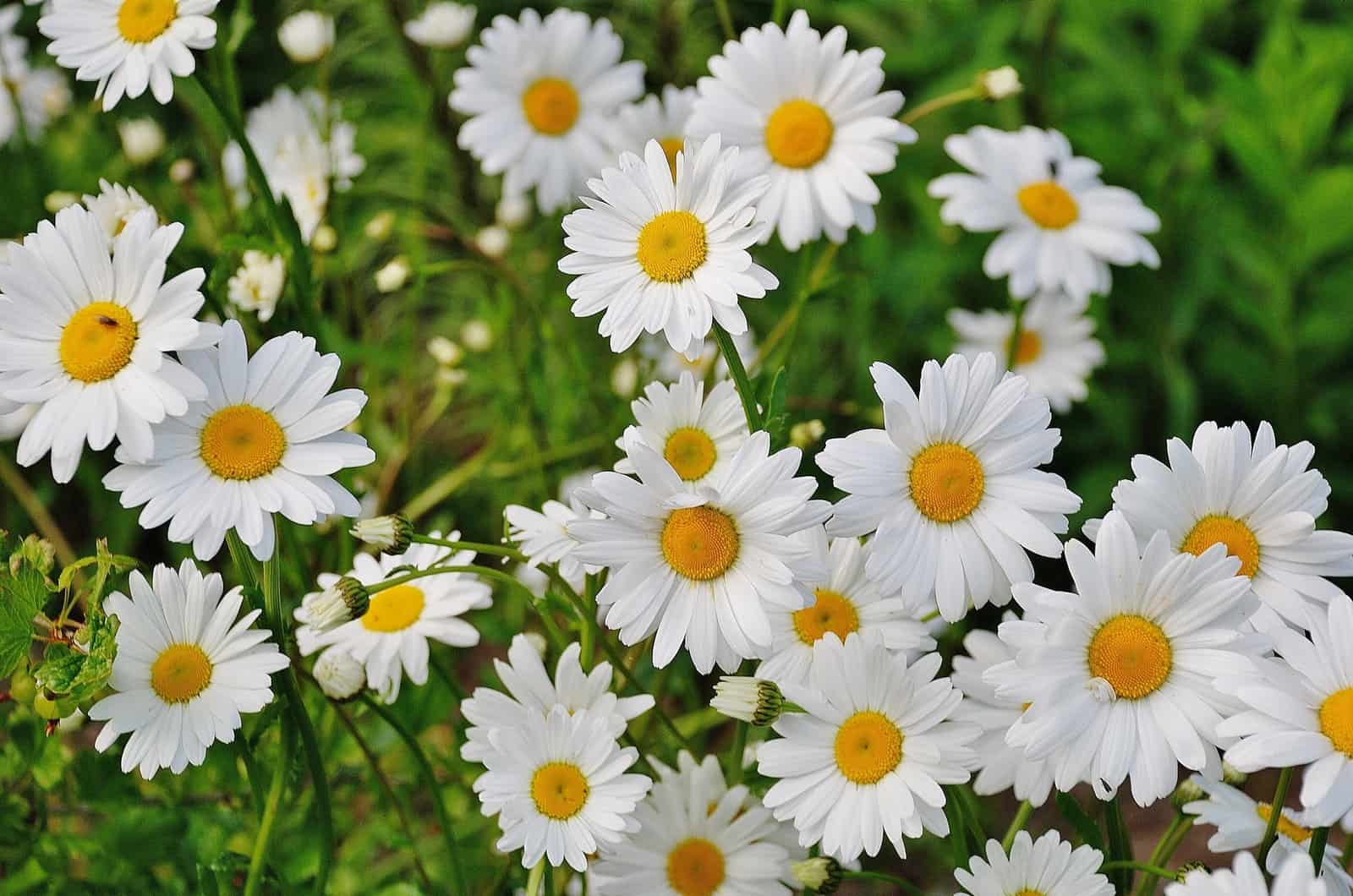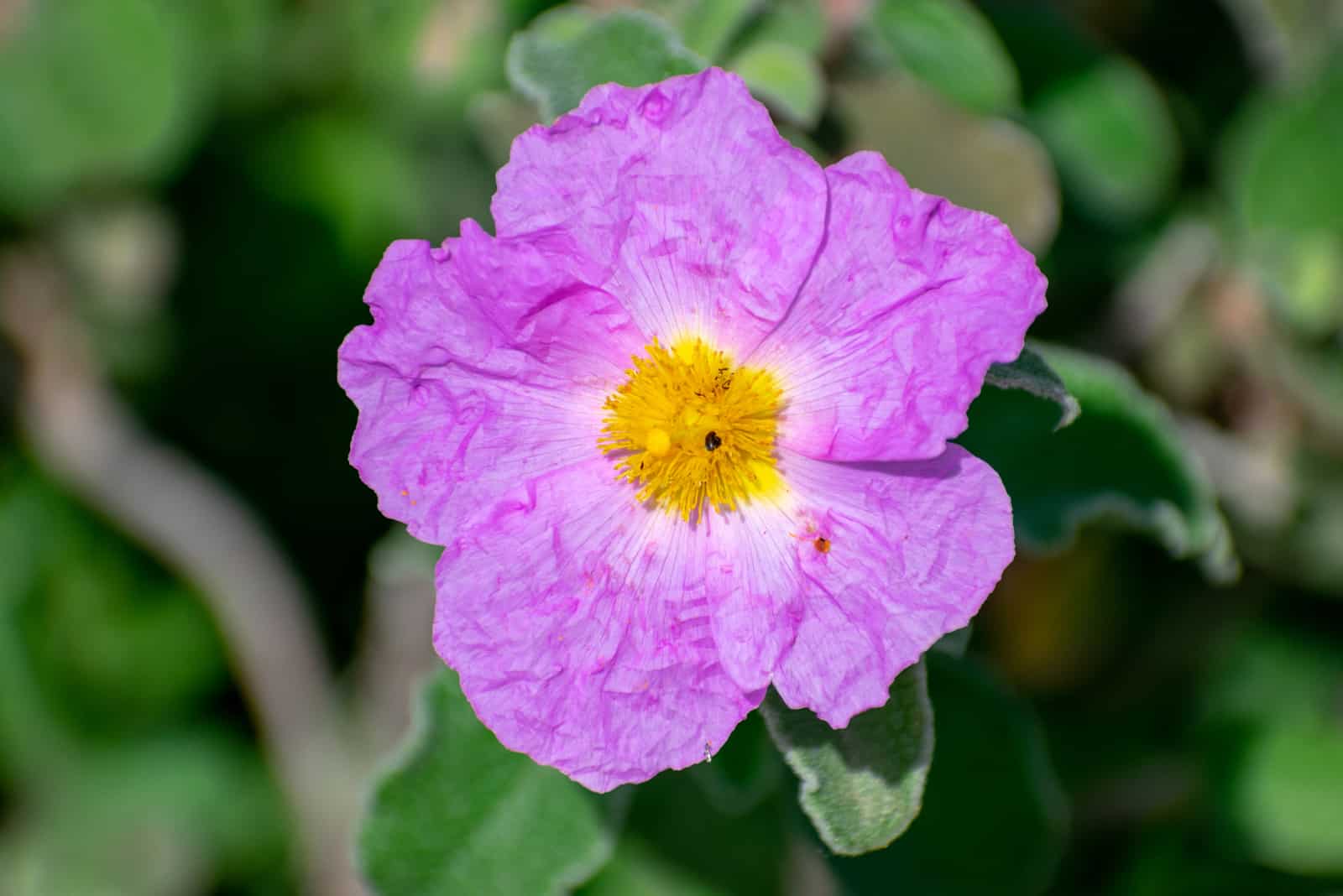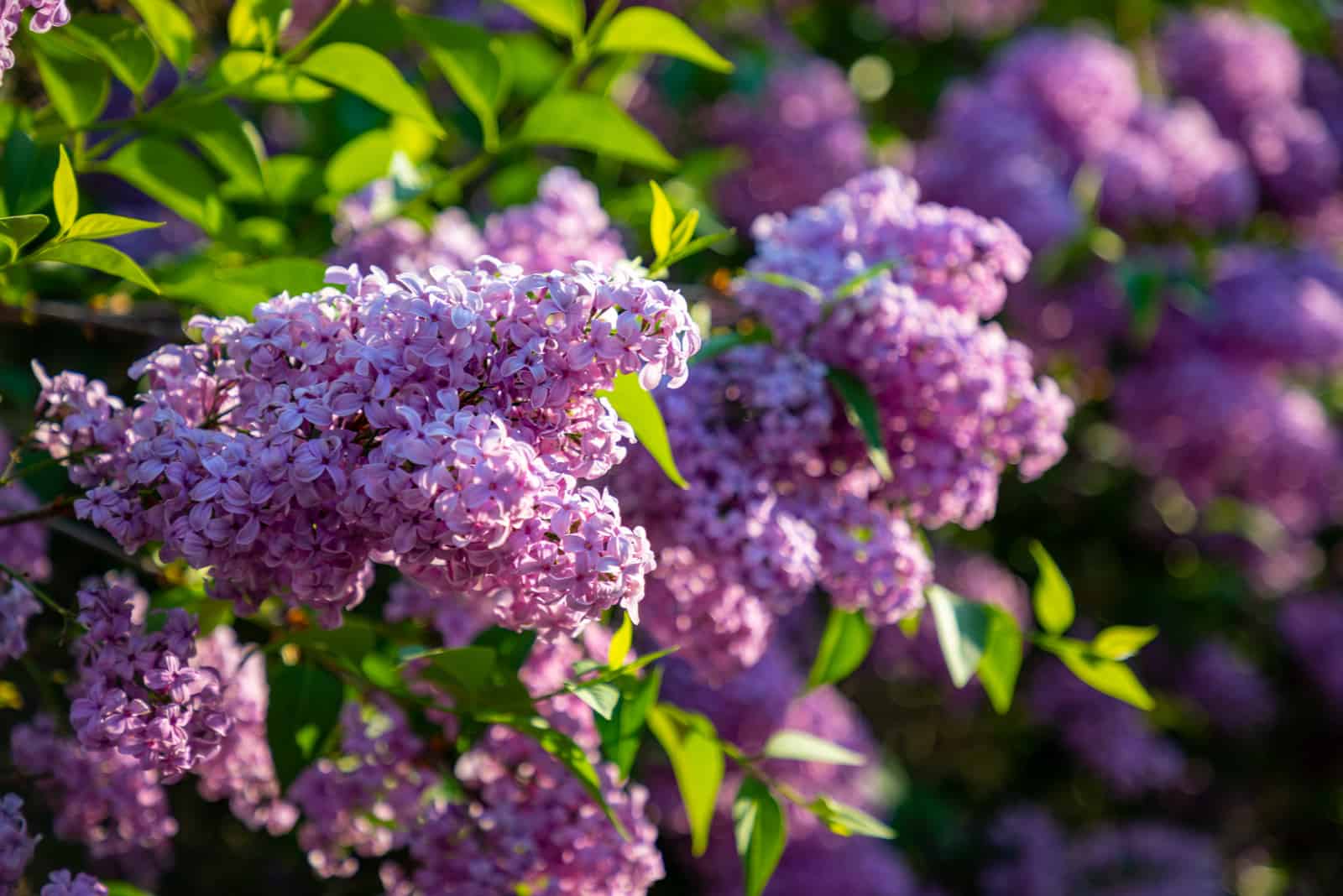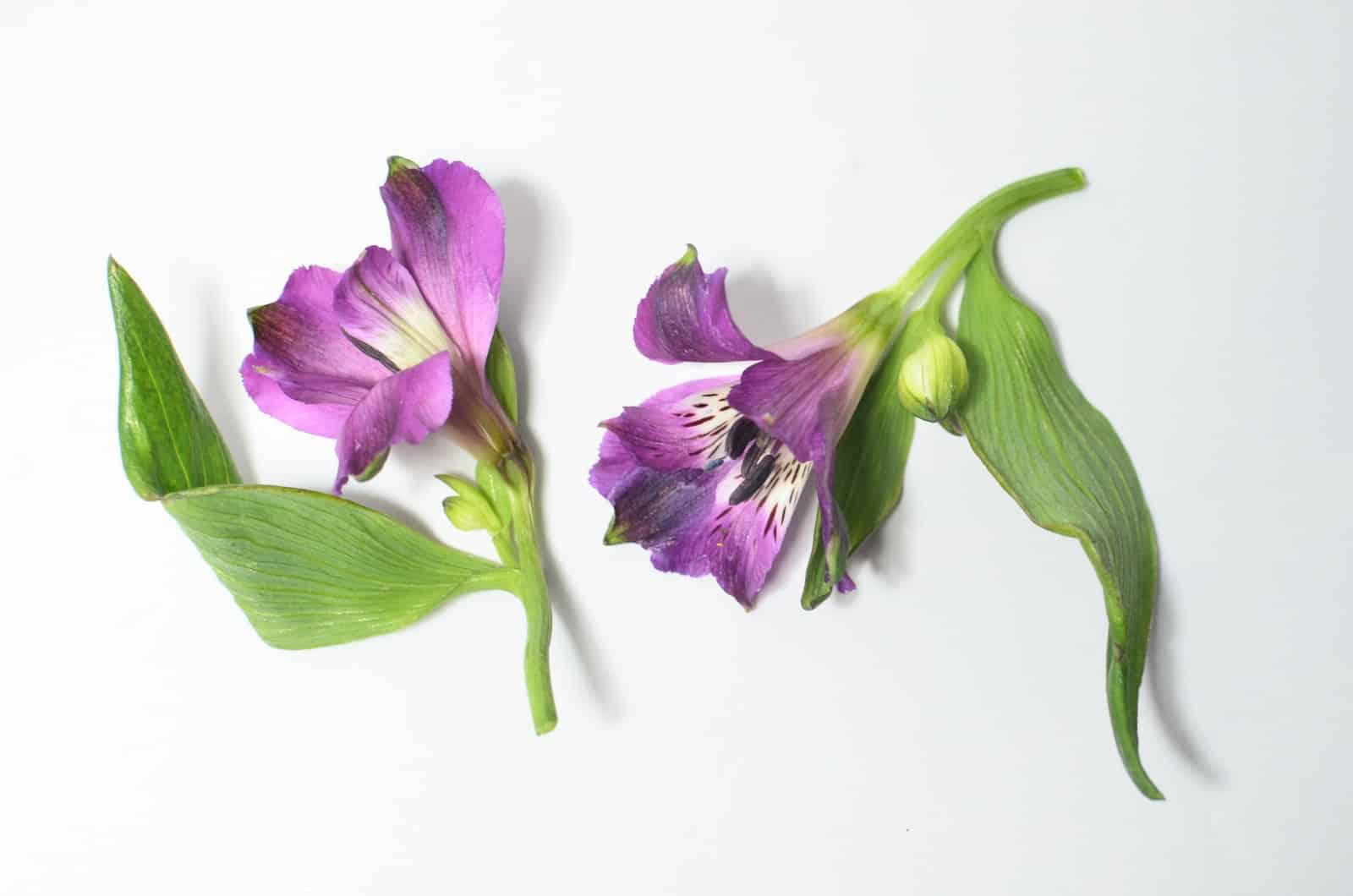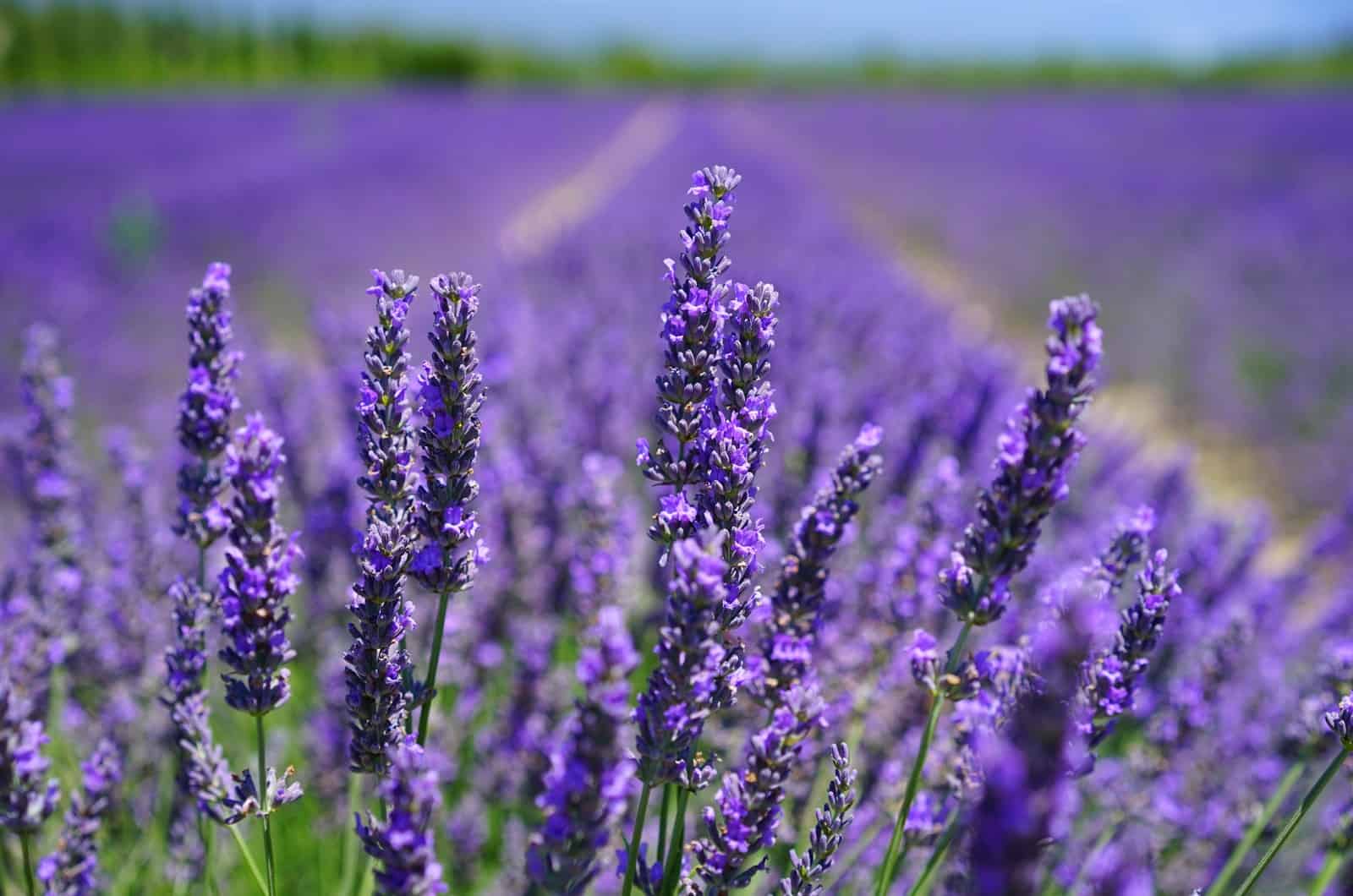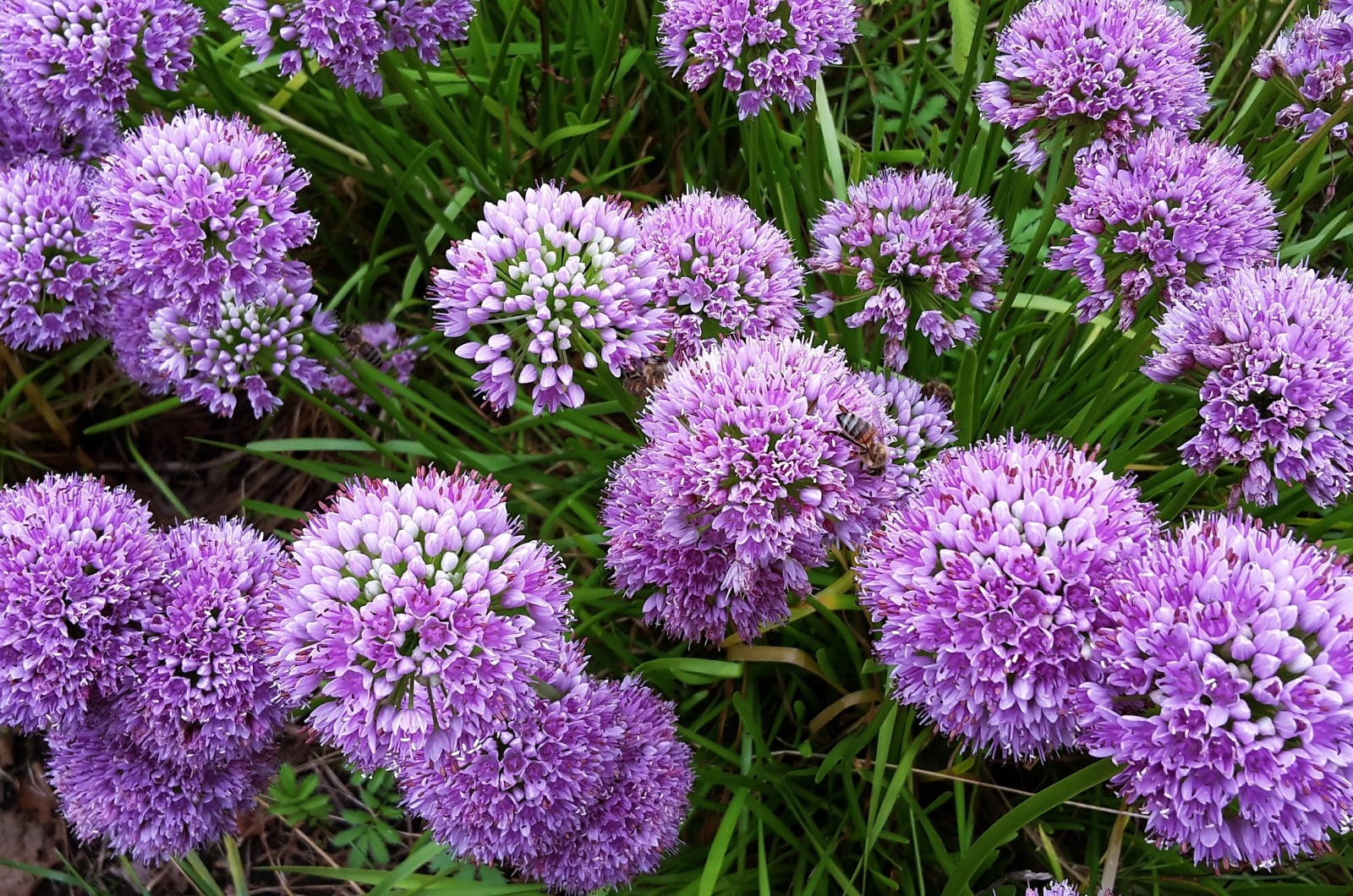Many know Spain for its rich culture, beautiful beaches, and spectacular scenery.
In my opinion, Spain also deserves a place on the list of the countries with the most beautiful flowers.
The meaning of each flower is essential as it suggests on which occasion we may gift a specific flower.
Flowers aren’t just for gifting; as a gardener, I choose growing first.
Here’s a list of flowers of Spain; choose one to grow in your garden.
Spanish Bluebell
Scientifically known as Hyacinthoides hispanica, the Spanish bluebell is an easy-growing Spanish flower. If you live in the growing zones 3 through 8, this flower is a perfect choice for your garden.
The meaning of the Spanish bluebell is humility and gratitude. This was a perfect gift to express gratitude during Victorian times, as the flowers looked like they were bowing.
There is one more, probably more interesting, story related to these flowers.
Medieval society was scared of Spanish bluebells as they believed that bluebell meadows were where witches hid. Before the witches invaded the fields, they had turned into fairies, and these creatures would cast a horrible spell if you touched or rang a bell.
Nowadays, these flowers are mainly grown because of their beauty and colors, which make a great addition to your garden decor.
The bells can be blue, white, or pink.
The most common varieties are Dainty Maid and Excelsior.
Spanish bluebells prefer shady areas; if you have some trees in your garden, place this flower under them.
One more thing, don’t ring a bell.
Gazania Flowers
One more flower of Spain, one more exciting story! These flowers were named after Theodorus of Gaza, he was a Greek-Italian scholar in the 15th century.
Suppose you were gifted a Gazania flower during that period. It could’ve meant two things: either the person who gave you it was rich (by rich, they meant extremely rich), or, it was a gift to bring you a fortune (I prefer this second meaning as show-offs aren’t anyone’s type).
Nowadays, the flower symbolizes fortune in a spiritual way.
It looks stunning; orange, yellow, and variegated combine to create a spectacular appearance.
The plant is scientifically known as Gazania rigens. The most common varieties are Kiss Bronze Star and Tiger Stripe Mix.
The plant grows well in 3-8 growing zones.
It’s not demanding; ensure at least five hours of full sun, and let the soil dry completely before watering. It’s relatively tolerant of drought due to its leathery leaves.
Pomegranate Flowers
Oldie but goldie, the pomegranate flower was discovered in Persia.
According to Greek mythology, the numerous seeds represented rebirth. This was related to the goddess Persephone, who was in charge of reincarnating lost souls.
The pomegranate flower symbolizes rebirth, and it is often used in traditional Spanish weddings. It announces new chapters and possibilities for newlyweds (a common motif in Spanish literature and art).
The botanical name of the pomegranate flower is Punica granatum, and the most common varieties are the Flore Pleno and Wonderful.
The flowers come in three colors: orange, red, and pink.
This plant requires at least eight hours of full sun and thrives best in 7-10 growing zones.
The plant doesn’t need rich soil; make sure not to over fertilize it.
Red Carnation
The Red Carnation, aka Dianthus caryophyllus, is the national flower of Spain. It symbolizes affection between lovers (perfect for weddings).
Red carnations were often used in a biblical context, and they represented Christ’s crown of thorns. Additionally, it was a symbol of respect, mainly for mothers (an excellent gift for Mother’s day).
These plants originated in the ancient Roman and Greek periods.
The plant has sweet-scented flowers that can be red, white, or pink. The flowers bloom until the end of the summer. At the very end, the dead-like blossoms promote new growth.
The most common varieties are the Laced Romeo, Helen, and Red Rocket.
These flowers appreciate full sun and well-draining soil. Plant them deep in the soil as they have firm roots.
The best growing zones for red carnations are 4 through 10.
Lantana
The Lantana camara symbolizes rigor. The plant is considered difficult to handle; it grows fast and wide. Additionally, the plant is toxic.
You must be wondering why anyone would grow such a plant? SImple, the flowers are beautiful and have healing properties if handled carefully.
In traditional Indian medicine, lantanas cure skin diseases and sexual dysfunction.
Lantana flowers come in yellow, purple, pink, or red colors.
The Athens Rose, Desert Lantana, Texas Lantana, and Dallas Red are the most common varieties.
These plants thrive in 8-11 growing zones and require five to eight hours of full sun.
Take the plant into your house as frost can permanently damage the plant during the winter.
Poppies
Papaver rhoeas, or poppies, were discovered thousands of years ago. They were often the most common motif of classical poetry.
They are associated with the fallen soldiers of WW1 as they symbolize death and eternity, bringing lasting peace to souls.
The flowers come in different colors, such as orange, yellow, pink, or red.
The most common varieties are the Bridal Silk and Ladybird. These plants need about six hours of full sun per day, and watering should be minimized as poppies are prone to root rot.
They grow best in the growing zones 6-9. Poppies thrive in the wildflower meadows of Spain.
Valencia Red Roses
You can see many roses of different colors in Alhambra palace in Granada. It’s a tribute to the love affair between Queen Isabella’s favorite member of the court, Ruiz de Alarcón, and young Lady Jacinta in the 15th century.
According to Washington Irvin’s ‘Rose of the Alhambra’ story, Ruiz de Alarcón gifted a red rose to Jacinda and put it in her braid.
Many roses, many symbols! Valencia red roses symbolize passion and love, yellow ones symbolize jealousy, blue represents mystery, and white roses symbolize purity.
Roses are used for different purposes; cosmetic, ornamental, and culinary.
These plants require loamy and well-draining soil and moderate watering; roses need watering more often during the summer.
Roses appreciate four to six hours of full sun and thrive in the growing zones 3-10.
Bougainvillea
Bougainvilleas symbolize beauty and peace. The most common varieties are the Thorn bougainvillea and Tree bougainvillea.
Bougainvillea is the national flower of Granada and serves as a decoration of Granada’s coat of arms.
The plant’s blossoms come in many colors, such as orange, pink, and purple. Many mistake bougainvilleas for poinsettias because of the colors and shapes of the flowers.
You can see floral arrangements with bougainvilleas on entryways in Mediterranean countries. They serve to welcome guests as they represent peace, and this is an old habit as many countries or cities were at war.
If you decide to grow these plants, ensure well-draining soil and at least six hours of full sun. The plant’s roots are delicate so pay close attention when planting.
Bougainvilleas thrive in 9-11 growing zones.
Water Lilies
In Buddhist and Hindu religions, water lilies represent resurrection. Nowadays, the plant symbolizes the purity of the heart.
Water lilies are the favorite flowers of brides for their bridal bouquets.
Spain is known for the pink variety of water lilies.
Water lilies are scientifically known as Nymphaeaceae, and the most common varieties are the fragrant water lily and white water lily.
These plants don’t like nutrient-rich soil as they are prone to bacteria. The plant needs about six hours of full sun and thrives in 3-10 growing zones.
Geraniums
The Geranium symbolizes friendship and health. However, these plants symbolized stupidity or foolishness during Victorian times.
The word geranium comes from the Greek geranos which means crane, as the carpel enclosing the seeds of the plant looks like a beak.
Interestingly, geranium flowers had different meanings depending on the color of the flower.
For example, white geraniums symbolized fertility and were used to repel snakes. If someone wanted to cast a love spell, the main ingredient was a pink flower. A popular belief was to plant a red geranium as it would warn you if an enemy approached.
I suggest you choose some other colors of geranium flowers when you want to gift them. For example, choose yellow ones when gifting geraniums to friends as they symbolize happiness and friendship. Also, yellow flowers are considered house-warming.
The most common varieties are the Cranesbeak, Rozanne, and Orion.
These plants need at least four hours of full sun and prefer 5-9 growing zones.
Here’s a video on how to grow geraniums indoors:
https://www.youtube.com/watch?v=YbLfvW117Ho
Lilies
Lilies, aka Lilium, come in different colors, and each color has a different meaning.
Before we move on to symbolism, here’s a story of how lilies were created. In Greek mythology, Zeus wanted his baby son Hercules to drink the milk of Hera, who wasn’t Hercules’ mother. Hera rejected this idea. While Hera was sleeping, Zeus brought Hercules to her, and when the baby approached, Hera woke up and pushed Hercules away. The drops of milk on the floor grew into lilies.
The story about Zeus and Hera made white lilies into symbols of motherhood and rebirth.
Orange lilies represent pride, and pink lilies represent femininity.
Nowadays, you can purchase many lily-scented perfumes. Even Romans in Ancient Rome used to fill pillows with lilies.
Some of the most common lily varieties are the Madonna Lily and Lily Of The Valley.
Lilies prefer 4-9 growing zones. They appreciate slightly colder climates as high temperatures will prevent the bulbs from blooming. This doesn’t mean that lilies don’t need sun; they prefer six hours of full sun per day.
Orchids
In Ancient Greece and Victorian England, orchids were symbols of status-virility.
Grecians consumed some orchid tubers as they believed they would determine or change the sex of the child in the womb (mostly girls to boys).
Luckily, this tradition isn’t used nowadays. It would be weird to see someone consume an orchid before a gender-reveal party. However, orchids serve as edible decorations and vanilla flavoring in floral arrangements, primarily for weddings.
Orchids symbolize love, luxury, and beauty.
The primary colors of Orchid flowers are yellow, white, and pink; however, you can find a wide range of shades nowadays because different colors can be injected into hybrids.
Orchids aren’t drought-tolerant; make sure to water them regularly, especially in summer.
However, orchids have delicate roots, similar to those of tulips. Pay close attention to the amount of water in the soil, as waterlogged soil can cause root rot.
These plants prefer morning or afternoon sunlight. Plant your orchid in a spot with partial shade.
Ornamental Onion (Allium)
Why are there onions on this list?! Does this plant make you cry?! The Ornamental onion is an onion cousin and symbolizes unity, patience, grace, and good fortune.
Allium flowers look stunning, which is why they are on this list.
First, let’s discuss the scientific name Allium. It means garlic in Latin. However, historians consider that the plant got the name Allium because of its smell. In Greek, Allium means ‘to avoid’.
Ancient Egyptians used this plant as a symbol of the universe.
As many believe, the plant won’t make you cry if you crush the flower. Additionally, it doesn’t smell unpleasant but rather subtle.
The flowers come in purple, white, and yellow, and I prefer purple ones.
This plant thrives in partial shade, and best performs in 4-10 growing zones.
The plant doesn’t need much watering, making it perfect if you are forgetful.
Anthora
The Anthora is one of those plants you should never gift to your loved ones.
There are two reasons for this; First, the plant is toxic, and second, it symbolizes death, misanthropy, or danger.
The Anthora is commonly known as Monkshood (the upper part of the blossom looks like the cover for a monks’ head) and Wolfsbane (shepherds used anthora in arrows to kill wolves).
Ancient Greeks called the plant the Queen of Poison and used it in wars.
This tradition continued even in WW2 (aconitine-treated bullets).
Read more about the mystery of the Wolfsbane plant here.
Although the plant is toxic, many have used it as a medicine for centuries to reduce fever or regulate blood pressure.
Anthora flowers come in purple, blue, or white. The plant looks spectacular, which is why florists generally sell the plant.
If you decide to grow anthora, plant it in a spot with partial shade, it also doesn’t require nutrient-rich soil.
The Carpenter’s Herb
The carpenter’s herb is commonly known as lacy self-heal. The plant belongs to the Lamiaceae (mint) family of flowering plants.
This plant has been used in medicine for centuries. Some researchers claim that the plant can help to fight cancer.
Scientifically known as Prunella vulgaris, the plant symbolizes curing.
Its botanical name is translated from German Die Braune (throat inflammation).
The most common flower colors are pink, purple, and blue.
Plant it next to other wildflowers if you decide to grow this plant.
Ensure partial shade for healthy growth. The plant thrives in 4-9 growing zones.
Daisy
Daisies are popular flowers due to their eye-catching appearance and positive meaning.
The Daisy was a sacred flower of Freya in Norse mythology. Freya was the goddess of fertility, and that’s how daisies became symbols of childhood and motherhood.
There’s one old Celtic legend about daisies. When an infant died, God sprinkled daisies over the ground, which is why daisies symbolize innocence.
Daisies also symbolize chastity. According to Roman mythology, the God of seasons and gardens, Vertumnus, fell in love with a nymph, Belides. She wanted to escape from him, and she turned into a daisy. That’s how the plant got its scientific name, Bellis.
Daisy flowers can be white, pink, or red.
The plant requires approximately six hours of full sun and thrives in 5-8 growing zones.
Gray-Leaved Cistus
You will see these flowers in many places when you visit Spain, especially in Andalucia.
The gray-leaved cistus symbolizes endurance.
Its leaves can be purple, pink, or white.
Scientifically known as Cistus albidus, the plant has gray leaves and unique flowers.
The plant doesn’t like moisture, so reduce watering to a minimum.
The Gray-leaved cistus needs at least 6 hours of full sun and thrives in 8-10 growing zones.
Lilacs (Syringa vulgaris)
Lilacs are official flowers of England but are often seen in Spain. The flowers symbolize confidence.
However, each color variety has a different meaning. White lilacs represent purity, blue tranquility, and purple symbolizes spirituality.
Ensure a lot of space if you decide to grow lilacs in your garden.
The most common varieties are the Yankee Doodle and Primrose.
These plants need about six hours of full sun and grow best in 5-7 growing zones.
Alstroemeria
Alstroemerias got their name after the Swedish botanist Clas Alströmer. If you think about which flower to give to your loved one, choose an alstroemeria as it symbolizes devotion.
Alstroemeria flowers can be white, yellow, pink, or red (or a combination).
If you decide to grow an Alstroemeria in your garden, provide it with morning sun, organic compost, and fertilizer.
The best growing zones for Alstroemerias are 8-10.
Lavender
I’m sure you’ve heard of lavender’s herbal purposes. Interestingly, these flowers were used for personal hygiene during the Middle Ages.
Lavender means “which must be washed” in Latin.
It symbolizes grace and serenity.
The Spanish version of lavender has scented leaves instead of flowers.
Lavender comes in purple, pink, red, and violet, and you can put it in bags and place it inside dressers or cabinets.
Lavender thrives in 7-9 growing zones and needs at least six hours of full sun to grow healthily.
Sunflowers
Spaniards don’t have good experience with sunflowers. In the 16th century, some Spanish explorers thought that the flowers were gold.
That’s the reason why sunflowers symbolize false riches. However, they also represent joy and vitality.
Also known as Helianthus annuus, sunflowers come in gold, orange, or red.
They need about six hours of full sun and grow best in 4-9 growing zones.
Wrapping Up
You should visit Spain not only because of the rich Spanish culture and unique festivals (I prefer those in Madrid and on the Canary Islands), but also because of the fantastic scenery enriched with different flowers of stunning color combinations.
The flowers of Spain are spectacular. If you ask for flor (flowers) when in Spain, you’ll be able to choose among many varieties.
Until next time!

